#Pancha Sky
Explore tagged Tumblr posts
Text
Telefónica Hispam destaca el papel de las mujeres en los eSports en un evento que contó con la participación de Pancha Sky

Telefónica Hispanoamérica organizó un conversatorio titulado “Level UP de las mujeres en los eSports“, enfocado en abordar los desafíos y roles femeninos en el mundo de los videojuegos. El evento, transmitido por streaming el pasado 26 de marzo, contó con la participación de destacadas profesionales del sector, incluyendo a Francisca Sky, comunicóloga chilena especializada en […]
Ir a la noticia completa
0 notes
Text

Om Namah Shivaya 🔱 Talon Abraxas
In Siddha Shaivism and Shaiva Siddhanta Shaivism traditions, Namah Shivaya is considered as Pancha Bodha Tatva of Lord Shiva and his universal oneness of five elements.
Na – Earth Mah – Water Shi – Fire Va – Air Ya – Sky or Ether
43 notes
·
View notes
Text
Digimon & mythology: the Warrior 10 and spirits
In the genesis of the Digital World there was the Warrior 10, a group of mighty Digimon who each represented one of ten elemental attributes. When Lucemon rebelled against God, the Warrior 10 fought him. In the end, they managed to seal away Lucemon at the cost of their own lives. While the Warrior 10 are long since dead, they passed their data and abilities down to the many Digimon types. In addition, each member left behind two spirits who can be taken up by others to become special Digimon.
Designed for the anime Digimon Frontier, the Warrior 10 and their spirit descendants go outside of the normal evolution methods. For each element there is two spirits: human and beast. The holder of the spirits can switch between human and beast forms. In addition, the holder can merge the two into a fusion form. All spirit Digimon are given the special level of hybrid, but in general human spirits are equivalent to the Adult/Champion-level, beast spirits to Perfect/Ultimate-level, and fusion spirits to Ultimate/Mega-level. In other media outside of Frontier, the spirits have been treated as normal Digimon. In addition, the spirits of fire and light can fuse with other spirits to take on a transcendent form. In the anime, only the holders of the fire and light spirits got to reach their fusion forms but the other heroic spirits (darkness, ice, thunder, and wind) from Frontier have been given their fusion forms in other media. The villainous spirits (water, earth, wood, and metal) have only been given their human and beast forms, which is a big missed opportunity. To fit with being the descendants of legendary heroes, the spirit Digimon have a lot of mythological themes in their names. A lot of these were changed in the English translation to avoid religious references. The concept of different elements that make up the world can be found in many cultures, including the classical elements originating in Greece (earth, air, fire, and water), the Chinese Wuxing (fire, water, wood, metal, and earth), and Hindu Pancha Bhuta (earth, air, fire, water, and akasha, which can be translated as sky, space, or ether).
The Warrior 10 member representing fire is AncientGreymon and it passed its abilities down to dragon Digimon. No real mythological references with it so we move onto the human spirit of fire: Agnimon. Agnimon is a flaming martial artist that hones its mind and controls its temper with yoga. Its name comes from Agni, the Hindu god of fire. In the Vedas, Agni brought light into the universe and frequently acted as the intermediary between humans and the gods, making him one of the most important deities. While later texts downplayed his importance somewhat, he is still a major deity and is invoked in many ceremonies and traditions. He also carried over into Buddhism and Jainism. Agnimon doing yoga is another reference to India. The beast spirit is Vritramon (eng: BurningGreymon), a ferocious dragon born from data produced by scientists researching volcanoes. Vritramon's name comes from Vritra, an asura (demon or evil demigod) who personified drought and was the archenemy of Indra, the king of the Hindu gods and god of the sky and weather. In the Hindu text Rig Veda, Vritra blocked all the rivers in the world to horde all the water and force the people to suffer. Indra then fought Vritra and eventually slew him, releasing the water and ending the drought. In one version of the story, Agni was originally on Vritra's side before being convinced to side with Indra, which may be why their Digimon versions are linked. While most early depictions of Vritra had him as a humanoid, some later adaptations made him into a dragon. The fusion of the spirits of fire is Aldamon, who combines the intelligence of Agnimon and bestial power of Vritramon. Its name comes from Ardhanarishvara (Japanese doesn't have the "L" sound and uses the "R" sound instead, which is how "ardha" becomes "alda"), which is a fusion of the Hindu god Shive and his consort Parvati. Usually depicted as male on the right and female on the side and represents a fusion of the masculine and feminine powers of creation and how the feminine and masculine principles of the divine are inseparable. While Ardhanarishvara is a fusion of male and female, Aldamon represnets the fusion of human intellect and bestial power. Aldamon's attacks are maned Brahmastra and Brahmashira, legendary weapons from Hindu mythology. The transcendent form of the spirit of fire is KaiserGreymon (eng: EmperorGreymon) and it doesn't have any real mythological references other than harnessing ley lines, a concept found in new age pseudoscience.
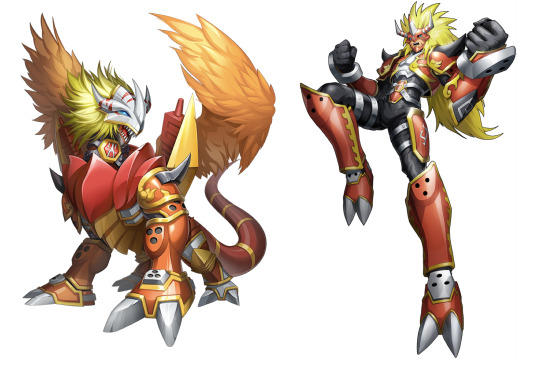


(left to right: AncientGreymon, Agnimon, Vritramon, Aldamon, KaiserGreymon). I have to compile images to stay under the limit
The Warrior 10 member representing light is AncientGarurumon, which passed its abilities down to beast Digimon. Once again, no mythological references so we'll move onto the human spirit. Wolfmon (eng: Lobomon) is a warrior empowered by a righteous spirit that contains a holy light. It doesn't have any real mythological references but its attack names are in German and the rest of the spirits do have a germanic and norse theme. Missed oppurtuinity to reference the faoladh, benevolent Irish werewoves, tbh. The beast spirit of light is Garmmon (english: KendoGarurumon), an extremely fast beast that hunts evil. It will never obey an evil creature, but will devote itself to a master with all its heart. Garmmon's name comes from Garmr or Garm, a wolf found in Norse mythology. It is described as a guardian of the gates of the bad afterlife Hel, giving it a similar role to the Greek Cerberus. Garmr is trapped by a chain in a cave called Gnipahellir and in the Porse Edda, will escape during Ragnarok where he and the god Tyr will fight and kill each other. Garmr is very similar to the more famous Fenrir and the two may be different cultural variations of the same legend. The fusion of the light spirits is Beowolfmon, a fighter who cooly measures up its enemy with human-like intelligence and tries to remain level-headed in combat. Its name comes from Beowulf, the hero of the germanic epic of the same name. In the epic, Beowulf slays the monster Grendel and then its mother and became king before dying in the process of slaying a dragon. The transcendent form of the light spirits is MagnaGarurumon, which again doesn't have any mythological references.


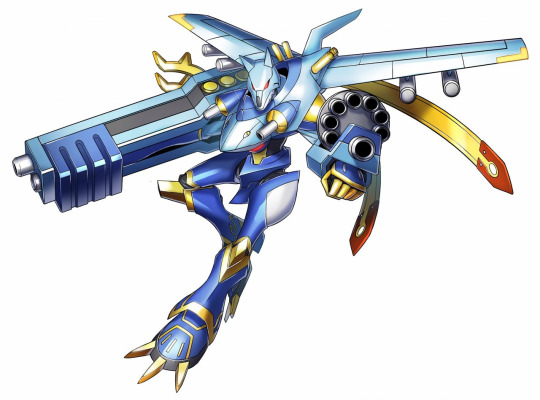
(left to right: AncientGarurumon, Wolfmon, Garmmon, Beowolfmon, and MagnaGarurumon)
Where there is light, there is darkness and the Warrior 10 member representing darkness is AncientSphinxmon, which passed its abilities down to mythical beast and demon beast Digimon. It is based on the great sphinx of Egypt. The Egyptian version of the sphinx was seen as a protector and was often associated with Ra, god of the sun. A bit ironic for the Digimon of darkness to be associated with a sun god. The spirits of darkness are unique in that there are two versions of each one, a corrupted and purified version. Also, I like that Digimon made the warrior of light a dog and the warrior of darkness a cat. The corrupted human spirit of darkness is Duskmon. It was born from the regrets of extinct Digimon species and exists to oppose holy Digimon. Duskmon doesn't have any real mythological references, but the corrupted beast spirit, Velgrmon, does. Velgrmon is a being of hatred as the proud Duskmon hates transforming into its ugly beast form. Velgrmon's name comes from Hræsvelgr, a gigantic eagle from Norse mythology that creates wind when it flaps its wings. The purified human spirit of darkness is Löwemon. It operates from within the darkness, but is not evil and instead hunts evil from the shadows. Löwemon wears a ring called Neeblinge, which comes from Der Rings des Nibelungen (The Ring of the Nibelung), an epic music drama by Richard Wagner. In the story, various gods, monsters, and humans battle to obtain the title ring, that will grant dominion over all. The story is named after and partially based on the germanic epic poem Nibelungenlied. The purified beast spirit of darkness is KaiserLeomon (eng: JagerLöwemon, whos unique armor lets it be incredibly fast and sharp enough to cut apart whatever it runs through. No mythological references here, it just furthers the visual connection to sphinxes. Similarly, there is no real mythological connection in the fusion form Raihimon (eng: Rihihimon). Its a humanoid sphinx that is so skilled at stealth that few realize it even exists. The name "Raihi" is a corruption of the German "Reich", meaning "empire".
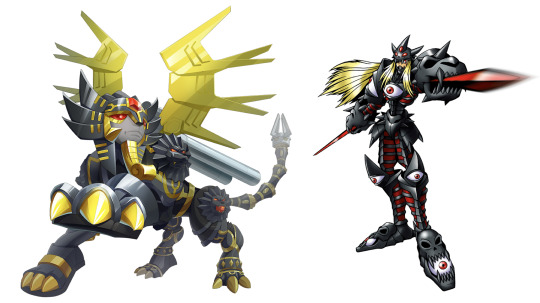
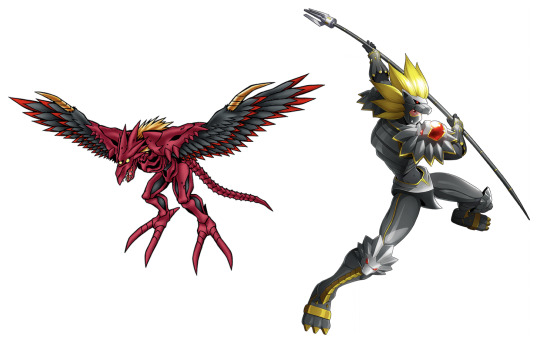

(left to right: AncientSphinxmon, Duskmon, Velgrmon, Löwemon, KaiserLeomon, Raihimon)
The Warrior of ice is AncientMegatheriummon, which passed its abilities down to mammal and icy snow Digimon. While it is not based on a myth, the megatherium is an extinct giant ground sloth. The human spirit of ice is Chackmon (eng: Kumamon). Its a cute tedy bear made of snow that carries military gear and claims to be part of an arctic defense force. No myths here so we go to the beast spirit of ice: Blizzarmon. Blizzarmon (eng: Korikakumon) is a ruffian with a love of battle that offers prayers to an ice god. There's no obvious mythological references other that it maybe being based on a yeti. The yeti is a mythical being said to live on the Himalayan mountains. It is supposed to be hairy and is associated with ice and snow at least. Weirdly enough, Blizzarmon's axes are named in the Igbo language of Nigeria, which is not a place known for snow. The fusion of ice is Daipenmon which not only has no connection to myths, it has no real connection to its prior forms. Not sure how two snowy mammals merge to become a mechanical ice shaver penguin dual-wielding popsicles.


(left to right,: AnceintMegatheriummon, Chackmon, Blizzarmon, Daipenmon)
The Warrior of thunder is AncientBeatmon (eng: AncientBeetlemon), which passed its powers down to insect Digimon. Digimon associates insects with electricity a lot. The human spirit of thunder is Blitzmon (eng: Beetlemon), a mechanical yet highly emotional electric wrestler with a heart of gold. Blitzmon is not based on mythology, but it is one of many references Digimon makes to the Japanese franchise Kamen Rider, which features a lot of martial artists wearing bug-themed costumes. The beast spirit of thunder, Bolgmon (eng: MetalKabuterimon) sacrifices mobility for incredible firepower as it turns itself into a tank. Its name comes from Firbolg, a mythical tribe of people who inhabited Ireland in the story collection Lebor Gabála Érenn. I found a few sources associating the name Firbolg with a thunder god, though as far as I can tell this appears to be a misconception. Bolgmon's profile also references scarabs, which were used in ancient Egypt that were used as seals and symbols of the sun due to an association with the god Kephri. The fusion spirit is RhinoKabuterimon. It's just an electric rhinoceros beetle. Nothing mythical about that. You may have noticed that the fire and light spirits have tons of references and the other spirits have a lot less. That comes down to the writing of Frontier where if you weren't the human holders of the fire and light spirits, the writers did not care about you and occasionally seemed to resent having you in the show to the point they turn you into a power-up for the heroes. The lack of interest in the other spirits and their holders is my biggest gripe with Frontier.


(left to right: AncientBeatmon, Blitzmon, Bolgmon, RhinoKabuterimon)
TheWarrior of wind is AncientIrismon (eng: AncientKazemon), who passed down its abilities to bird man and fairy Digimon. Iris is a minor Greek goddess who personified the rainbow and usually acted as a servant for other gods. The human spirit of wind is Fairimon (eng: Kazemon), a good-hearted gossip with the power to manipulate the atmosphere. Fairimon is based on modern interpretations of fairies. Fairies are found throughout European folklore, but are most famously associated with Ireland. The myths about them are highly diverse and they can range from benevolent to malevolent to having a completely alien sense of morality. More modern depictions of fairies often simplify them to small humans with insect wings and make them cute and friendly. This is the version that Fairimon is based on. Fairimon is also based on kamaitaichi, a form of yokai from Japanese folklore. They are associated with wind and dust devils and often look like weasels. The story about them says that they (often working in groups of three) will use sickles to cut people and then heal them so fast that the person will feel the pain of being cut but see no wound. One hypothesis to explain the origin of the stories was that minute vacuums in the air would make people feel pain with no wound. Fairimon is stated to be able to use is power over air to cause these vacuums. The beast spirit Shutumon (eng: Zephyrmon) is a mischevious trickster with the power to cast Mesopotamian spells. It is based on Shutu, a minor Mesopotamian god or goddess of wind. Design-wise, it also takes after two other Mesopotamian creatures. Lamashtu is a she-demon that appears as a fusion of human and various animals (fitting for a beast spirit) while Lilith was a demon (or class of demon) associated with women and birds. The fusion spirit is JetSilphymon, who can fly so fast it can't be seen and unleash hurricanes from its giant pinwheel. In the writings of the Swiss philosopher Paracelsus, Sylphs are elemental spirits of air.
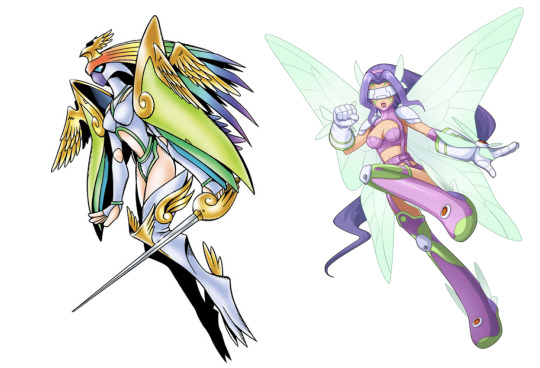

(left to right: AncientIrismon, Fairimon, Shutumon, JetSilphymon
The Warrior of earth was AncientVolcamon (eng: AncientVolcanomon), which passed its powers down to ore and mineral Digimon. The human spirit of earth is Grottemon (eng: Grumblemon), a temperamental artisan who can summon hammers from the ground. Grottemon is based on European folklore of gnomes and dwarves, diminutive people who lived underground and were typically great craftsmen. The gnome was also used by Paracelsus as an earth elemental and Grottemon's design is based on garden gnomes and their pointy hats. The beast spirit of earth is Gigasmon, a gigantic and violent beast with earthen skin baked into armor. Gigasmon is visually based on some sort of troll or ogre, but thats the closest it gets to a myth.

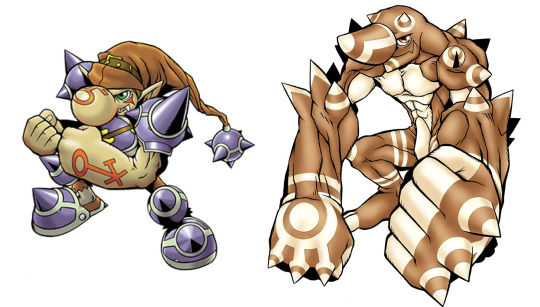
(left to right: AncientVolcamon, Grottemon, Gigasmon)
The Warrior of wood is AncientTroiamon, who passed down its abilities to plant Digimon. It is based on the Trojan horse from the Odyssey and Aeneid. The story goes that during the Trojan war, the Greek forces could not breach the walls of Troy. Odysseus had the Greeks feign retreat and leave behind a giant wooden horse as an offering to the goddess Athena. The Trojans brought the horse into the city as a trophy and that night, a force of men hidden in the horse came out and opened the city's gates, allowing the Greek army to invade the city. The human spirit of wood is Arbormon, a seemingly emotionless puppet that is actually keenly aware of its surroundings. Arbormon is based on a karakuri doll, mechanized Japanese puppets that were able to move on their own. The beast spirit of wood is Petaldramon, a giant and hungry plant dragon.

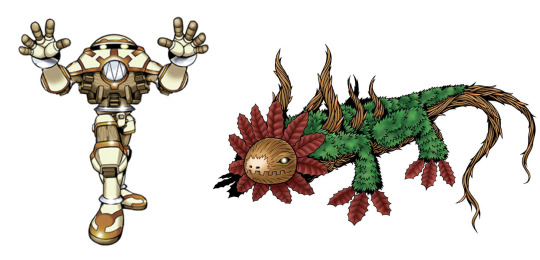
(left to right: AncientTroiamon, Arbormon, Petaldramon)
The Warrior of water is AncientMermaimon, who passed its abilities down to aquatic Digimon. AncientMermaimon is based on mermaids. Human-fish hybrids has appeared in virtually every culture that lived around water, though AncientMermaimon is based on the common European image of a mermaids. It holding a trident and having power over water is similar to the Greek sea god Poseidon. The human spirit of water is Ranamon, whose mood is as changeable and temperamental as the sea. Ranamon is also based on fish/human hybrids, though is more humanlike than most mermaids. Its name comes from the Spanish ford for frog, "rana", which is why it's dumb that more recent English translations like the card game keep trying to change it to Lanamon. The Japanese L/R confusion strikes again. The beast spirit of water is Calamaramon, a witch who excels at offense and defense. It is based on more monstrous versions of the human/fish hybrid.


(left to right: AncientMermaimon, Ranamon, Calamaramon)
The Warrior of steel is AncientWisemon, who passed its abilities down to mutant Digimon. It is all-knowing due to having access to the Akhasic Records, a spiritual compendium of all knowledge found in Theosphy and new-age spiritualism. The human spirit of steel is Mercuremon (eng: Mercurymon), a genius tactician and philosopher. The beast spirit of steel is Sephirothmon (eng: Sakkakumon), a bizarre being that possess the power of all 10 elements. Sephirothmon is based on the Sefirot tree of Kabbalah, a school of Jewish mysticism that attempted to explore the relationship between the eternal, unchanging god Ein Sof and the finite mortal world. Kabbalah is an extremely complex subject that I can't do justice with the short amount of research I'm doing for this post. The Sefirot tree, which Sephirothmon takes the shape of, is a concept in Kabbalah intended to illustrate the 10 methods or emanations of God's work in the material world. Each emanation also may represent a metaphysical world that people can pass through as they try to understand God. While the 10 spheres of the Sefirot tree each represent one of the emanations and their relationship to each other, the 10 spheres of Sephirothmon's body each represent one of the 10 elements that make up the Digital World and presumable how they and their associated Warrior 10 member relate to each other. The Sefirot tree is also supposed to help one gain wisdom and they further understand God and AncientWisemon and the steel spirits are associated with knowledge and wisdom.


When the power of all of the spirits come together, they become Susanoomon, a god who presides over destruction and regeneration. When the Digital World descends into chaos, Susanoomon will appear and destroy it so that a new one can take its place. Susanoomon carries a weapon called ZERO-ARMS: Orochi. Susanoo is the Shinto god of storms and wind that has been portrayed as both a hero that slays monsters and a wild and dangerous god of storms. This with with Susanoomon representing both destruction and regeneration. The most famous story involving Susanoo says that he was banished from the heavens after his bad behavior terrfied his sister, the sun goddess Amaterasu. Now on Earth, Susanoo encountered an old couple who told him of a mighty, eight-headed snake named Yamato-no-Orochi who had devoured seven of their daughters and would be coming back for the eighth and final one soon. Susanoo agreed to help them and transformed the final daughter into a comb to keep her hidden. He then brewed strong sake (an alcoholic beverage) and offered it to Orochi. After the snake got drunk and passed out, Susanoo killed it. In Orochi's tail, Susanoo found a sword that he gave to Amaterasu as a gift, leading to the two reconciling. ZERO-ARMS: Orochi is based on the sword found in Orochi's tail. There is an Orochimon, but it debuted before Susanoomon and the two are not connected.

#digimon#digimon frontier#mythology#hindu mythology#japanese mythology#warrior ten#warrior 10#kabbalah#fairy#norse mythology#beowulf#agnimon#lobomon#wolfmon#chackmon#blitzmon#beetlemon#duskmon#lowemon#fairimon#kazemon#grottemon#grumblemon#arbormon#ranamon#mercurymon#susanoo#susanoomon#lore#digimon lore
32 notes
·
View notes
Text
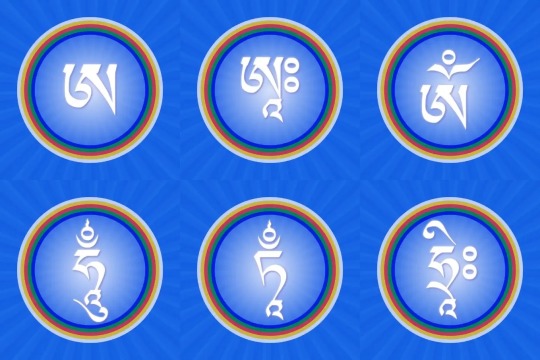
The Seed Syllables
The following figure shows a mosaic of all the seed syllables (skrt: bijas). Bija literally translated means "seed", and in the case of sacred syllables, can be taken to mean "mystical symbols and sounds which represent root attributes of the cosmos, manifest and unmanifest". The bijas carry with them great power and influence. The Vedic creation myths state that the scripture was "heard" (skrt: sruti), and was later encoded into the Sanskrit language, as such the sound and visual representation connects directly to that ancient power (skrt: apauruseya). When used in meditation, visualization, and sound, the practitioner can connect directly with the primordial nature of each bija.
The bijas are (from top clockwise):
* A (tib: a)
* AH (tib: AH)
* OM (tib: oM)
* HUM (tib: hU~M)
* TAM (tib: tAM)
* HRIH (tib: hrIH)
Hidden Symbology
While researching this project, it was fascinating to learn more about the hidden symbolism which appears in Buddhist imagery, specifically Tibetan Vajrayana and Dzogchen (tib: rdzogs chen) in particular. While the images in this collection appear simple in their design, they are expressing ancient esoteric teachings encoded into symbols.
For the images of this collection, two core teachings were used to encode the symbols: Annutara Yoga Mother class Tantra (Vajrayogini, left-hand tantra), and Ati Yoga Dzogchen's second Rigpa (skrt: vidya, tib: rig pa) wisdom lhun grub.
Working from the outermost symbol inwards, we have:
Rays of Light
Rays of light emanate from the center-point on a background of royal-blue sky.
Five Spherical Rings
On an exoteric level the rainbow-like rings represent the five elements (skrt: pancha bhuta, tib: 'byung ba lnga) as described in Vajrayana:
* Ether, Space (Vyoma, Akasa): White, Vairochana, KHAM
* Air (Vayu): Green, Amitabha, YAM
* Fire (Agni): Red, Akshobhya, RAM
* Water (Varuna): Blue, Ratnasambhava, VAM
* Earth (Prithivi, or Bhumi): Yellow, Amoghasiddhi, LAM
On an esoteric level the rings have a vast interpretation that can consume a lifetime (or more) of study.
Mother Tantra: To understand the way in which the female tantra is symbolized in the images, we must first consider the Pancha Jina Buddha Mandala. Five Victorious Buddha Mandala is one of the primary formulations of the bliss-body (skrt: sambhoga kaya), and a way to conceptualize Buddhahood in meditation and art.
In the male tantras, this mandala is visualized clockwise beginning from the eastern direction (bottom in the mandala). Directionally, this would be:
* East (Blue, Bottom, Akshobhya, HUM)
* South (Yellow, Left, Ratnasambhava, TRAM)
* West (Red, Top, Amitabha, HRIH)
* North (Green, Amoghasiddhi, AH)
* Zenith (White, Center, Vairochana, OM)
However, in the female tantras the eastern and zenith position are switched and one visualizes in a counterclockwise direction beginning at the zenith, hence the name "left-hand".
Encoding: Rings as the female tantra version of the Pancha Jina Buddha Mandala as a completion-stage "inner-offering".
It's important to note (and visualize) the colors starting inside with blue and working counterclockwise outwards to white. We are beginning at the zenith, at emptiness.
Dzogchen: With the second Rigpa wisdom lhun grub, the rings take on another level of meaning which builds upon the previous mandala. The lhun grub teachings state that the "rainbow body" (tib: 'ja' lus) is a level of realization, or full enlightenment and the self-liberation of the human body into a non-material body of light. The "rainbow body phenomenon" is the third party observation (spheres of rainbow light) of the moment when a practitioner attains the rainbow body (sambhoga kaya) at death.1 In Dzogchen this concept (lhun grub) is symbolized as a set of spherical rings called thigle (tib: thig le).
Encoding: Rings as a thigle, the rainbow body, and spheres of rainbow light.
Vajra Midpoint, Bindu, and Emptiness
The vajra (tib: rdo rje) is a symbol, like the rings, which can consume an entire lifetime (or more) of study. Focusing on Tibetan Buddhism and the esoteric viewpoint, the vajra is a symbol of an adamantine state of existence and embodies emptiness (skrt: shunyata). The center of the vajra represents the Null state, where Samsara emerges, regenerates, and disintegrates. On one side of the vajra is Phenomena, and on the other is Noumena.
The Sanskrit meanings for the word bindu(the point or dot at which creation begins, and the starting place of the mandala) is another way to approach this metaphysical imagery.
Encoding: Central burst of white light as shunyata, the Null state of the vajra, and the bindu (dot or point). The bijas (seeds) emanate out of the point, out of emptiness, and merge back into the same. The female bindu and the male bija giving birth to the cosmos.
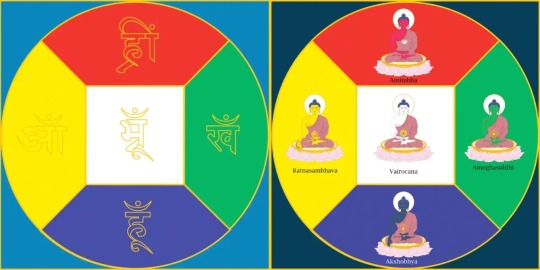
9 notes
·
View notes
Text
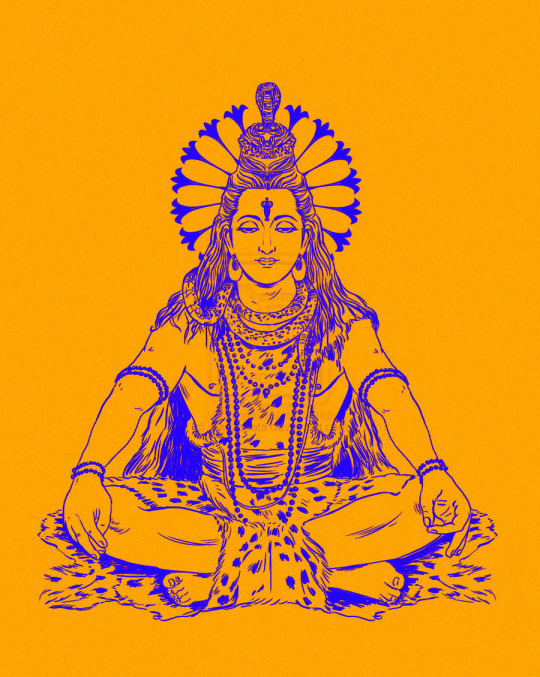
Om Namah Shivaya In Siddha Shaivism and Shaiva Siddhanta Shaivism traditions, Namah Shivaya is considered as Pancha Bodha Tatva of Lord Shiva and his universal oneness of five elements.Na – EarthMah – WaterShi – FireVa – AirYa – Sky or ether
12 notes
·
View notes
Text
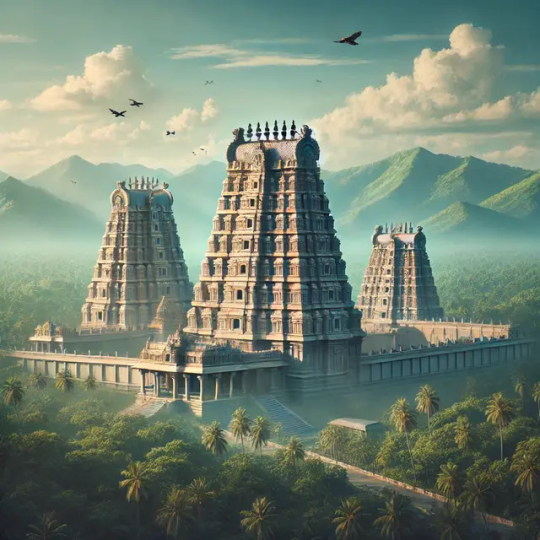
Discover Spiritual Serenity: Visiting Sri Kalahasti Temple Near Tirupati
Just an hour’s drive from Tirupati lies the revered Sri Kalahasti Temple, a must-visit destination for pilgrims and spiritual seekers. Known for its Vayu Lingam, representing the wind element, this ancient temple is one of the most significant Shiva temples in South India. Let’s explore why Sri Kalahasti is a spiritual gem and how you can easily add it to your Tirupati pilgrimage itinerary.
Significance of Sri Kalahasti Temple
The Sri Kalahasti Temple holds deep spiritual importance, especially for devotees of Lord Shiva. Its Vayu Lingam is one of the Pancha Bhoota Lingas, representing the five elements of nature—Earth, Water, Fire, Air, and Sky. What makes this temple even more unique is the belief that it’s a sacred site for Rahu-Ketu Pooja, a ritual to overcome doshas (malefic effects of planets).
Key Highlights of the Temple:
Vayu Lingam: The self-manifested Lingam is believed to represent the air element, signifying life and movement.
Architectural Marvel: Built during the Pallava dynasty, the temple showcases intricate carvings and towering gopurams.
Rahu-Ketu Pooja: Special ceremonies are conducted to ward off negative planetary influences.
Legend of Bhakta Kannappa: The temple is associated with the story of the great devotee Kannappa, who offered his eyes to Lord Shiva.
How to Reach Sri Kalahasti Temple from Tirupati
Sri Kalahasti Temple is just 36 km from Tirupati and can be easily reached by road. It takes about 1 hour by car or bus to get to the temple.
Private Taxis: The most convenient option for flexibility and comfort.
Bus Services: Regular state-run and private buses are available from Tirupati.
Pilgrimage Packages: Opt for packages that include transportation for a hassle-free visit.
Explore Tirupati with Tirupati Balaji Package
Planning to visit Tirupati and Sri Kalahasti? Tirupati Balaji Package offers customized travel packages that include visits to nearby spiritual destinations like Sri Kalahasti Temple.
Why Choose Tirupati Balaji Package?
All-Inclusive Packages: Transportation, accommodation, and temple visits are all taken care of.
Flexible Itineraries: Include popular destinations like Sri Kalahasti in your travel plan.
Hassle-Free Bookings: Easy online booking for a stress-free pilgrimage experience.
Expert Guidance: Get assistance with temple rituals and poojas for a meaningful visit.
Best Time to Visit Sri Kalahasti Temple
The temple can be visited year-round, but the ideal time is between October and March, when the weather is pleasant. Special rituals are performed during Maha Shivaratri, attracting thousands of devotees.
Tips for Visiting Sri Kalahasti Temple
Dress Modestly: Traditional attire is recommended to respect the temple’s sanctity.
Plan for Rahu-Ketu Pooja: If you plan to perform this ritual, arrive early to avoid long queues.
Combine with Tirupati Darshan: Plan your visit to Sri Kalahasti after completing darshan at Tirumala.
Conclusion
A visit to Sri Kalahasti Temple is an enriching spiritual experience that complements your Tirupati pilgrimage. From its sacred Vayu Lingam to its fascinating legends, the temple offers a glimpse into India’s rich spiritual heritage. To make your pilgrimage seamless, book with Tirupati Balaji Package and enjoy a well-organized, peaceful journey to Tirupati and beyond.
Embark on your spiritual journey today!
#spiritualjourney#pilgrimage#travelindia#tirupatidarshan#tirupatibalaji#bangaloretotirupati#templetour#tirupati#tirumala#divineexperience
0 notes
Text
Kumbh Sankranti 2025: The Sun entering Aquarius
Today, February 12th 2025 at exactly 17:10 Paris time, Surya (Sun) enters into Kumbh (Aquarius) sign of the zodiac.
Kumbh Sankranti is for me a special time of year as my Lagna (Ascendant) is Kumbh and these past 2.5 years, my ascendant lord Saturn has therefore been transiting my first house. And I can say that the "me" before summer 2022 and the me of today have not too much in common - it was quite a transformational transit.
What's special for the past three years is that every transit of the Sun through the sign of Aquarius has been a particularly difficult one, as it also brought about a conjunction of two major celestial ennemies: the Sun and Saturn are not well together.
People born between the 11th of February and the 14th of March had probably particularly difficult day during this month between 2023 and 2025.
The Sun is the emperor, it's the absolute ruler and enforcer of a strict hierarchy. In the vedic tradition, Shani (Saturn) is a bastard son of the sun god Surya, and he rejects his father. Saturn is the big democrat of the sky, someone who wants that the rules apply to all and someone who does not recognise any hierarchy, especially not one that is not well merited through hard work and suffering: the birth lottery should not exist according to Saturn.
Also on the level of the five Bhutas (Pancha Bhuta), both are very different. While the Sun is hot and fiery, Saturn is the master of the element air, but in Saturn's case it's a cold and slow moving air. Talking of the ayurvedic doshas, Sun is fiery pitta and Saturn is vata.
The conjunction between Sun and Saturn happens annually, so it's obviously not the end of the world, but it's never an easy time. Especially versus the end of the transit, arount March 11, when the conjunction is at its strongest, the sun burns (combusts) Saturn and weakens him, all the while Saturn is in his own sign and dignity, so very strong.
Add the eclipses (lunar then solar) around that time and we're in for even mor turbulent times, also on the world and political scene (would you believe....).
In my personal case, the sun entering my ascendant sign at this time of year has another strong significance: on February 20th I start a new planetary sub-period. After nearly three years of a sub-period of Venus, a short but probably intense sub-period of the Sun will succeed, between then and the end of December.
While my main period of Mercury stays the same, my natal sun has some very important significations around my health and longevity, my inner transformation, my progress in the world of the occult, but also - looking at some of my divisional charts - for my ability to find and keep a job and to earn money, ultimately to get rid of very old and oppressing debt.
So my hopes are high for 2025: I do a lot of vedic (mantra and other) practices around the Sun, among others, and will re-inforce them now.
For those interested in Vedic Astrology or "Jyôtish", hit me up if you want to book a consultation. They are not free but I am reguarly told that they are powerful and transformative to my clients.
And if you want to learn more about the vedic conception of the Sun, I can recommend a short but insightful book that covers the major aspects of the Sun God Surya in vedic tradition, mythology, astrology and yoga.
Sarva Mangalam!
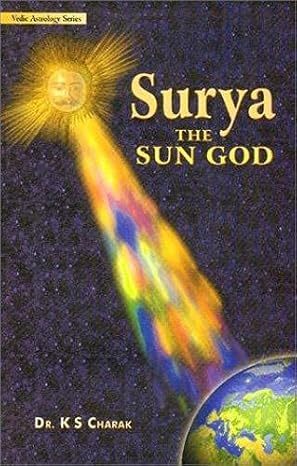
1 note
·
View note
Text
Uncover the Ancient Beauty of Mahabalipuram, Tamil Nadu
India, a land steeped in ancient history and cultural richness, offers a treasure trove of destinations for every traveller. Among these, Tamil Nadu stands out for its vibrant heritage and stunning temples. Nestled within this state is the quaint town of Mahabalipuram, a UNESCO World Heritage Site that has captivated visitors for centuries. Formerly known as Mamallapuram, this coastal town boasts a fascinating blend of history, art, and natural beauty. Join us as we delve into the top attractions and experiences that make Mahabalipuram a must-visit destination for any traveller exploring South India.
Mahabalipuram Shore Temple

Nestled along the Bay of Bengal, the Shore Temple in Mahabalipuram stands as a testament to ancient Indian architectural prowess. This UNESCO World Heritage Site is one of the oldest stone temples in South India, offering a captivating glimpse into the rich cultural heritage of Tamil Nadu.
The temple complex comprises three distinct shrines, each dedicated to a Hindu deity. Admire the intricate carvings and sculptures that adorn the walls, depicting stories from Hindu mythology. The central shrine is dedicated to Lord Shiva, the Destroyer, while the other two shrines are devoted to Lord Vishnu, the Preserver.
The Majestic Lion Monolith

As you explore the temple complex, don't miss the awe-inspiring Lion Monolith. This colossal sculpture, carved from a single piece of granite, is a symbol of power and strength. Its majestic presence has captivated visitors for centuries.
Plan Your Visit:
Location: Mahabalipuram, Tamil Nadu 603104
Timings: 6:00 AM to 6:00 PM
Entry Fees: INR 10 (for Indians) and INR 250 (for Foreign Nationals)
Mahabalipuram's Wide Beach

As you journey along the East Coast Road from Chennai to Mahabalipuram, you'll be greeted by a stunning stretch of coastline. The Wide Beach, as it's aptly named, offers a serene escape amidst the region's ancient temples and historical sites.
The beach is adorned with fascinating rock formations and natural caves sculpted by the relentless force of the ocean. Explore these hidden gems and marvel at the intricate patterns and textures created over centuries.
The Wide Beach is also a vibrant hub of activity. Witness the daily lives of local fishermen as they prepare their boats and cast their nets. Interact with the friendly community and learn about their traditions and way of life.
Sunrise and Sunset

Don't miss the opportunity to experience the breathtaking beauty of the sunrise and sunset from the Wide Beach. As the sky is painted with hues of orange, pink, and purple, creating a truly magical atmosphere.
The Seashell Museum of Mahabalipuram

While many visitors to Mahabalipuram are drawn to the ancient temples and historical sites, there's a hidden gem waiting to be discovered: the Seashell Museum. This unique museum boasts the largest collection of seashells in Asia.
Explore the museum's vast collection of seashells, fossils, and corals from around the globe. Learn about the different species, their unique characteristics, and the environments they inhabit. The museum's exhibits are both educational and visually stunning.
In addition to the museum, the complex also features a shopping centre where you can purchase various sea products, from souvenirs to jewellery. And when you're ready to refuel, head to the on-site seafood restaurant for a delicious meal featuring fresh local ingredients.
Plan Your Visit:
Location: 191/1A2, Kalpakkam, Road, Mahabalipuram, Tamil Nadu 603104
Timings: 8:00 AM to 8:00 PM
Entry Fees: INR 100 (additional ticket of INR 50 for the aquarium and souvenir shop)
The Pancha Rathas

The Pancha Rathas (also known as the Pandava Rathas) are a captivating ensemble of rock-cut temples dating back to the 7th century Pallava Dynasty. This UNESCO World Heritage Site is also a must-visit for anyone exploring the rich history and architectural wonders of Mahabalipuram.
As the name suggests, the Pancha Rathas resemble five chariots carved from a single massive granite rock. These extraordinary structures are a testament to the skill and craftsmanship of the Pallava artisans.
The five rathas are named after the Pandava brothers and their wife, Draupadi, from the Hindu epic Mahabharata. Each chariot is unique in its design and size, reflecting the individual personalities and roles of the legendary characters they represent.
You can also marvel at the intricate carvings and sculptures on the temple walls depicting scenes from Hindu mythology and daily life.
Plan Your Visit:
Location: Mahabalipuram, Tamil Nadu 603104
Timings: 6:00 AM to 6:00 PM
Entry Fees: INR 10 (for Indians) and INR 250 (for Foreign Nationals)
The Ganesha Ratha Temple

The Ganesha Ratha Temple is a testament to the artistic brilliance of the Pallava Dynasty. This beautiful temple, again carved from a single pink granite rock, is a stunning example of Dravidian architecture.
While the temple is now dedicated to Lord Ganesha, the elephant-headed god of wisdom and remover of obstacles, it was originally built in honour of Lord Shiva.
The Ganesha Ratha Temple is shaped like a chariot, a symbol of journey and progress. The intricate carvings and sculptures that adorn its exterior depict stories from Hindu mythology, inviting visitors to immerse themselves in the rich spiritual heritage of Tamil Nadu.
Plan Your Visit:
Location: Mada Koil St, Mahabalipuram, Tamil Nadu 603104
Entry Fees: No entry fees
Krishna's Butterball

Near the iconic Pancha Rathas, Krishna's Butterball is a geological wonder that defies gravity. This massive boulder, weighing approximately 250 tons, precariously balances on a steep incline, offering a breathtaking spectacle for visitors.
The unusual positioning of the Butterball makes it a popular spot for photography.
A Legend of Krishna

The Butterball's name is inspired by the Hindu deity Lord Krishna, who was known for his love of butter. According to legend, Krishna would often steal butter from the village women, leading to playful encounters and mischievous adventures. The Butterball's precarious balance is said to symbolize the god's divine playfulness and unpredictable nature.
Over the centuries, various attempts have been made to move the Butterball, but all have failed. The stone's remarkable stability has puzzled scientists and mystified visitors alike. Some believe that the Butterball is held in place by divine intervention, while others attribute its stability to the unique geological formations beneath it.
Plan Your Visit:
Location: E Raja St, Mahabalipuram, Tamil Nadu 603104
Timings: 6:00 AM to 6:00 PM
Entry Fees: No entry fees
The Timeless Beauty of Mahabalipuram

All of this is more than enough to prove that Mahabalipuram offers a captivating blend of history, culture, and natural beauty. You can explore ancient temples, relax on pristine beaches, and immerse yourself in the vibrant culture of South India.
With its rich heritage and stunning landscapes, Mahabalipuram is a must-visit destination for an unforgettable experience. We recommend you plan your trip with India Spirit Travels to create your perfect itinerary and discover the timeless wonders of this enchanting coastal town.
#Mahabalipuram#TravelToMahabalipuram#MahabalipuramDiaries#HistoricMahabalipuram#ExploreMahabalipuram#MahabalipuramAdventures#MahabalipuramBeach#AncientMahabalipuram#MahabalipuramMonuments#SouthIndiaTravel#HeritageTrail#TempleTownMahabalipuram#SeasideHeritage#visaonline#indiavisa#indiatourist#India Spirit Travels#visa india#indian visa
0 notes
Text
Pancha Bhoota Sthalam Temples Tour Package from Chennai

we Offer 5 Days Pancha Bhoota Sthalam Temples Tour Package from Chennai. Online Pancha Bhoota Lingam package from Chennai to Kanchipuram Trichy Tiruvannamalai Srikalahasti Chidambaram tour Package Cheapest deals and Best Price Pl Call Us +91 9841862359 or Whats app Chat: +91 9176070718
At Pancha Bhoota sthalam temples Tour Package from Chennai are set of five temples of lord Siva, there are five Elements of Nature Earth, Water, Fire, Air and Sky. This five Siva Temples are Located in South India states of Tamilnadu and Andhra Pradesh.
Ekambareswarar Temple (Earth) in Kanchipuram – Tamil Nadu.
Jambukeswarar Temple (Water) in Tiruchirappalli – Tamil Nadu
Arunachaleeswarar Temple (Fire) in Tiruvannamalai – Tamil Nadu
Srikalahasteeswara Temple (Air) in Srikalahasti – Andhra Pradesh
Thillai Nataraja Temple (Sky) in Chidambaram – Tamil Nadu
Duration: 4 Night / 5 Days
Destination: Srikalahasti-Kanchipuram-Thiruvannamalai-Chidambaram-Thiruvanaikaval
Tour Itinerary
Day 01:- Chennai to Srikalahasti-Kanchipuram Today Morning Chennai Pickup to Srikalahasti, Reach Srikalahasti darshan to Srikalahasteeswara temple (Pancha Bhoota Sthalam – Air) after darshan start to drive Kanchipuram hotel transfer. – Night Stay at Kanchipuram.
Day 02:- Kanchipuram-Tiruvannamalai Today Morning after Breakfast darshan to Kanchi Kamatchi Amman temple , Ekambareswarar temple Pancha Bhoota Sthalam – Earth) after darshan Checkout from the hotel start to Tiruvannamalai, reach at Tiruvannamalai Check in to hotel and Leisure. – Night Stay at Tiruvannamalai.
Day 03:- Tiruvannamalai to Chidambaram Get Morning Breakfast at hotel after Breakfast darshan to Arunachaleeswarar temple ( Pancha Bhoota Sthalam – Fire) after darshan 12.00 Noon Checkout from the hotel Start to drive Chidambaram, reach at Chidambaram Check in to hotel Leisure. – Night Stay at Chidambaram.
Day 04:- Chidambaram to Vaitheeswaran Koil-Trichy Today Morning Breakfast at hotel after breakfast Darshan to Thillai Nataraja temple (Pancha Bhoota Sthalam – Sky) after darshan Check out from the hotel Proceed to Trichy Hotel transfer and Leisure. – Night Stay at Trichy.
Day 05:- Trichy to Thiruvanaikaval-Trichy Airport / Station Drop (or) Chennai Airport / Station Drop Today Early Breakfast at Hotel after Breakfast darshan to Thiruvanaikaval Jambukeswarar temple (Pancha Bhoota Sthalam – Water) after Darshan Checkout from the hotel Proceed to Trichy Airport / Station Drop (or) Chennai Airport / Station Drop
More Details Visit at -
3 Days Pancha Bhoota Sthalam Temples Tour Package
4 Days Pancha Bhoota Sthalam Temples Tour Package
5 Days Pancha Bhoota Sthalam Temples Tour Package
0 notes
Text
Inicia la Legends Cup en Chile: Pancha Sky, Tabatha Pacer y más lideran equipos en esta emocionante competición
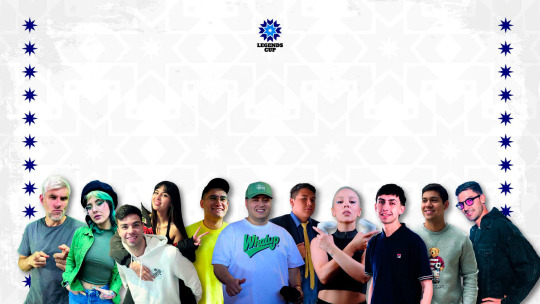
La fiebre de la Legends Cup ha llegado a Chile con su versión local, comenzando el domingo 12 de noviembre. Este torneo de fútbol 7, que ha conquistado a la audiencia global, presenta ocho equipos encabezados por destacados influencers chilenos. Desde Pancha Sky hasta Tabatha Pacer, las personalidades más queridas liderarán sus equipos en una […]
Ir a la noticia completa
0 notes
Text

Har Har Mahadev!!!
Om Namah Shivaya 🔱 Talon Abraxas
In Siddha Shaivism and Shaiva Siddhanta Shaivism traditions, Namah Shivaya is considered as Pancha Bodha Tatva of Lord Shiva and his universal oneness of five elements.
Na – Earth Mah – Water Shi – Fire Va – Air Ya – Sky or Ether
27 notes
·
View notes
Text
"Real Realities." From the Jabala Darsana Upanishad. "The Exploration of the Mysteries of Goat Herd."

6. Now I will tell you about the five types of Dharana (holding steady - a stage in meditation - here we try to hold on what we are mediating upon without wavering).
6.1 In the sky which is in the middle of the body, Dharana of the sky outside should be made. Similarly in the breath, Dharana of air outside should be made. In the fire in the stomach, Dharana of the fire outside should be made.
6.2 In the fluid aspects of the body, Dharana of the water outside should be made. In the earthy aspects of the body, Dharana of the earth outside should be made.
6.3 Sage, also it is necessary to chant the pancha bhootha mantras viz., Ham, Yam, Ram, Vam and Lam. It is said that this very great Dharana destroys all sins.
Ham= I am
Yam=observant
Ram=delight
Vam=flowing
Lam=at play
All the trouble in the world comes from the imprint of very strange ideas upon a fixed and concrete world. We tell ourselves all kinds of stories about things, things that are just not true, never have been and never will be. This prevents us from developing the right emotions and thoughts towards the world around us.
The Upanishads say this is an easy thing to prevent through meditation. One must sit and stop the mind and see what happens when the world runs itself. Eventually the real world freely enter the mind, find a match with a real response and then life on earth will change.
0 notes
Text
Mystical Essence of Pancha Bhuta Elements in our Life
Pancha Bhuta delves into the fundamental building blocks of nature, which are believed to compose everything that exists in the universe. The five elements are:Earth, Water, Fire, Air, and Sky.
1 note
·
View note
Text
https://famousastrologycentre.com/best-vastu-astrologer-in-bangalore/
Best Vastu Astrologer In Bangalore | Top Vastu Consultant in Bangalore
Best Vastu Astrologer in Bangalore knew secrets of using all five elements of universe.He is Top Vastu & Online Vastu Consultant in Bangalore
The term vastu springs from the basis word ‘Vas’ which suggests ‘to live in’. Vastu is an ancient science that specialize in the development of houses & buildings because the arrangements of materials inside them. It seeks to take care of the balance of 5 elements of nature, so as to make sure harmony between man and nature. These elements of nature, also referred to as ‘Pancha Bhoota’, includes Earth, Water, Air, Fire and Space and using them consistent with Vastu paves the way for a fulfilled with happy life. Deviation from the principles of vastu, causes imbalance within the energies and may cause financial distress, poverty, litigation, failed relationships, and health issues contact Best Vastu Astrologer in Bangalore for the simplest results. Our Best Vastu Astrologer in Bangalore have knew the secrets of using all the five elements of this universe and their special characteristics and influences like the magnetic flux, gravitational effect etc. of Earth, the galaxy within the sky, the directions and velocity of the winds, light and warmth of the SUN including the consequences of its Ultra-Violet and Infra-Red

#Best Vastu Astrologer In Bangalore#Top Vastu Consultant in Bangalore#Online Vastu Consultant Bangalore
0 notes
Text
5 Major Shiva Temples or Pancha Bhoota Stalam signifying the five elements of life
1. Jambukeswarar Temple, Tamil Nadu Represents "Water" element

2. Arunachaleswarar Temple, Tamil Nadu The Shivalinga here represents "Fire" element

3. Ekambareswarar Mandir Kanchipuram, Tamil Nadu The Shivalinga here Represents "Earth" element

4. Kalahastheeshwara Temple, Andhra Pradesh, The Shivalinga here Represents "Air" element
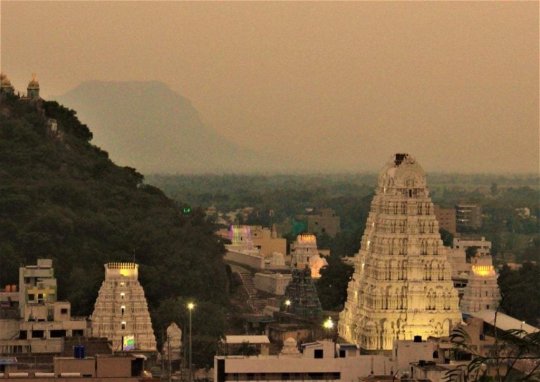
5. Thillai Nataraja Temple, Tamil Nadu, The Shivalinga here Represents "Sky" element
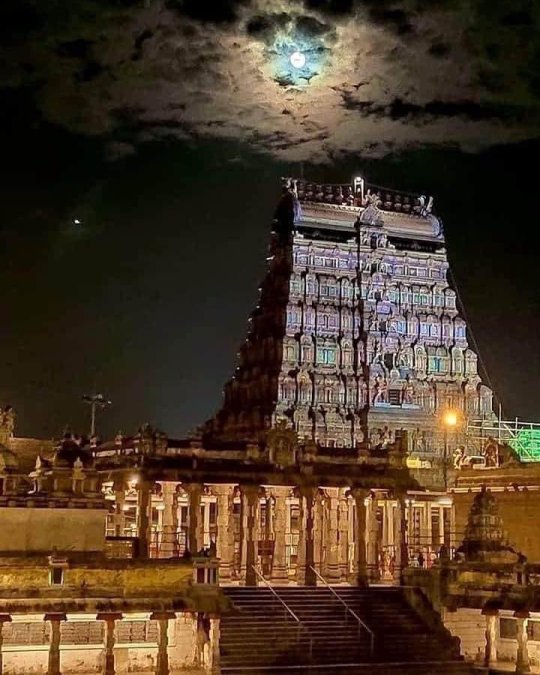
0 notes
Photo



Lockscreen soraka star guardian! reblog!
#soraka#lockscreen#league of legends#lol#pancha sky#actualizando#videogames#support#midlane#adc#jinx#jhin#awaken#riven#draven#fanarts#league of legends fan art#katarina#diana#angel#star guardian#soraka star guardian#jinx star guardian#lux star guardian#star guardian lockscreen#celphone#iphone
0 notes